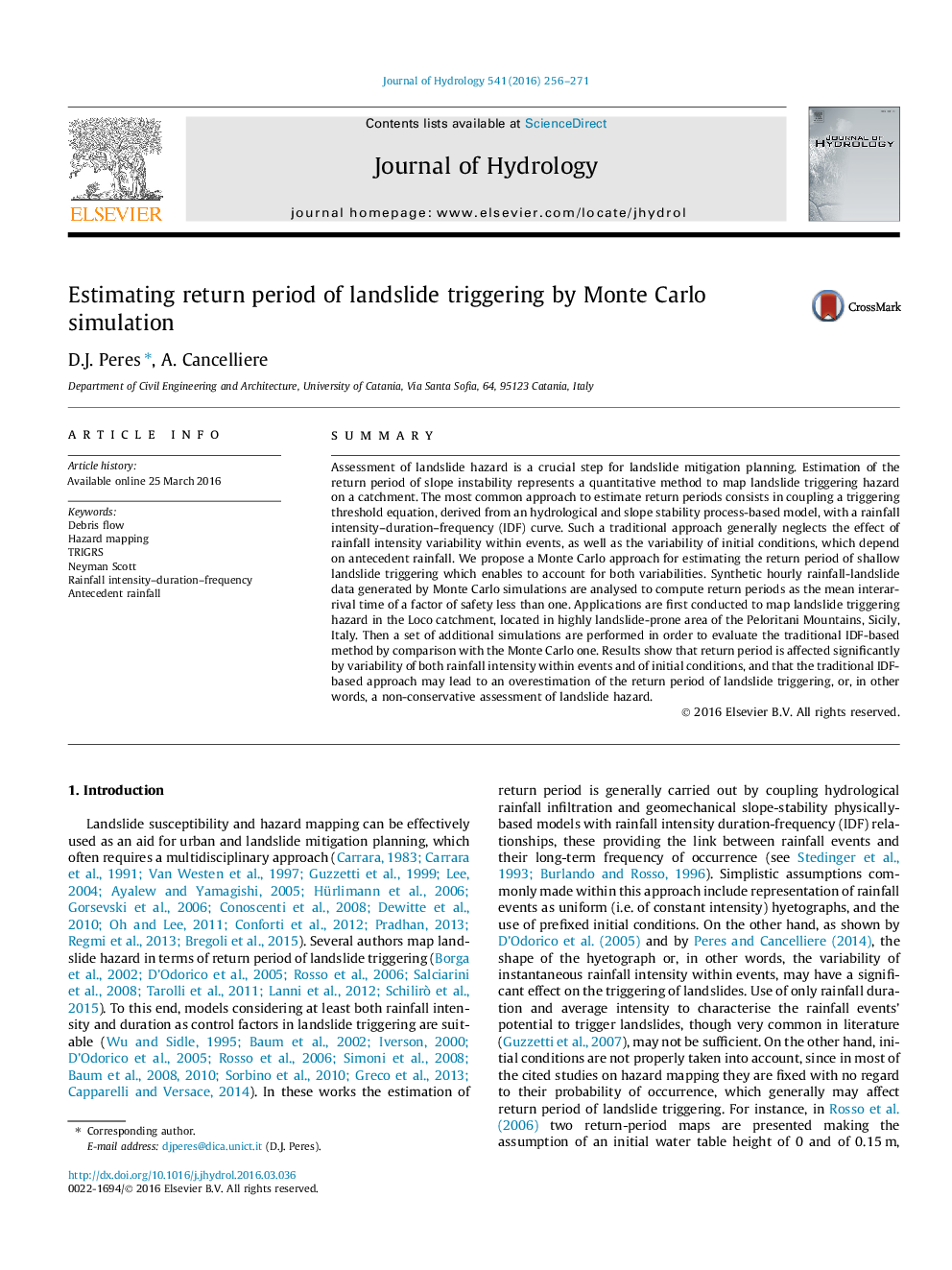| Article ID | Journal | Published Year | Pages | File Type |
|---|---|---|---|---|
| 6409373 | Journal of Hydrology | 2016 | 16 Pages |
â¢Monte Carlo simulations are performed to compute return period of landsliding.â¢Commonly-used methods for landslide return period estimation are evaluated.â¢Common assumption of constant hyetographs is non-conservative.â¢Initial conditions have a probability to occur which affects return period.â¢Use of rainfall IDF curves may lead to significant overestimations of return period.
SummaryAssessment of landslide hazard is a crucial step for landslide mitigation planning. Estimation of the return period of slope instability represents a quantitative method to map landslide triggering hazard on a catchment. The most common approach to estimate return periods consists in coupling a triggering threshold equation, derived from an hydrological and slope stability process-based model, with a rainfall intensity-duration-frequency (IDF) curve. Such a traditional approach generally neglects the effect of rainfall intensity variability within events, as well as the variability of initial conditions, which depend on antecedent rainfall. We propose a Monte Carlo approach for estimating the return period of shallow landslide triggering which enables to account for both variabilities. Synthetic hourly rainfall-landslide data generated by Monte Carlo simulations are analysed to compute return periods as the mean interarrival time of a factor of safety less than one. Applications are first conducted to map landslide triggering hazard in the Loco catchment, located in highly landslide-prone area of the Peloritani Mountains, Sicily, Italy. Then a set of additional simulations are performed in order to evaluate the traditional IDF-based method by comparison with the Monte Carlo one. Results show that return period is affected significantly by variability of both rainfall intensity within events and of initial conditions, and that the traditional IDF-based approach may lead to an overestimation of the return period of landslide triggering, or, in other words, a non-conservative assessment of landslide hazard.
